Naharyia, Israel: For quite some time, I had been hearing about the cable cars in Kiryat Shmona, reputed to be the longest cable car ride in Israel, and yesterday, I went to see for myself.
In Rosh HaNikra, only seven miles from Naharyia, there is a short cable car ride that takes a dramaticly steep downward journey to the caves carved out by the crashing waves of the Mediterranean, but today I was determined to ride the cable cars at Kiryat Shmona and enjoy the scenery on the way.
I hopped a bus to Akko, from Naharyia, and at the bus station where I had a planned meet-up with friends. We boarded the express bus #500. The express part of the trip was only to Carmiel, and from Carmiel to Kiryat Shmona, it was supposed to be a local bus.
This description turned out to be oxymoronic. While it was true that the bus did not make any stops from Akko to Karmiel, the entire ride to Karmeil, was one of stop and go and, when finally going, it was at the recklessly high speed of five to ten mph.
Eventually we finished traveling that bottle-necked part of the road and began the non-express part making many very quick stops and moving over the highway at a good speed. The entire trip was supposed to have been one hour and forty-five minutes, but it took us two and one-half hours to get there.
By the time we arrived, we were starving. With our broken Hebrew, we asked a woman in the street about where we could find a kosher restaurant. She directed us to a fancy restaurant, but while we were waiting for that restaurant to open we strolled around the area, and found another restaurant, Mama Chalsa, and the would-be diners waiting for the restaurant to open, declared Mama Chalsa’s food to be the best. The restaurant has a kosher certification of “mehaderin.”
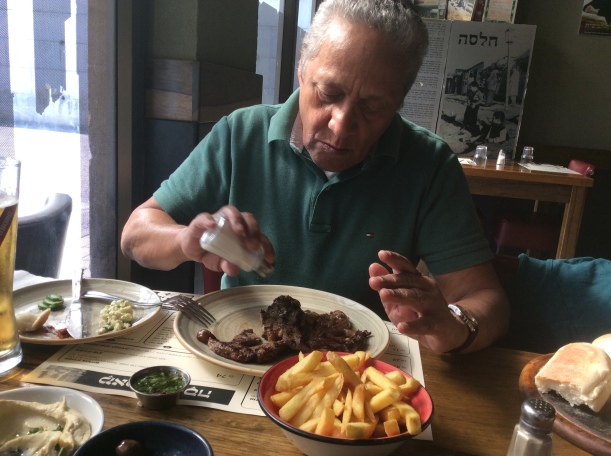
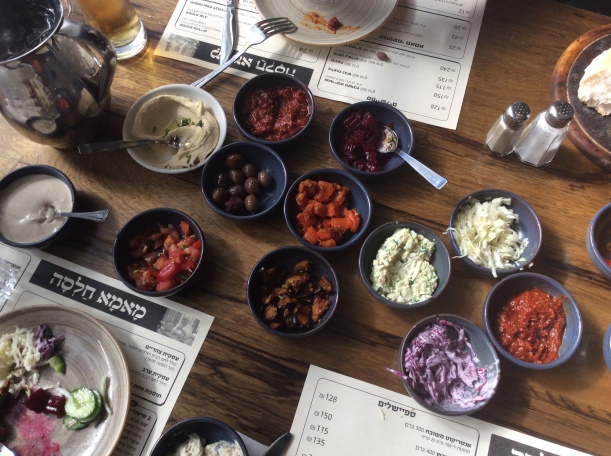
The menu had a priced-fixed businessmen’s luncheon. It came with fourteen different “saladim” dishes, all delicious, hot freshly made rolls, drinks, plus the main dish. We selected the salmon steaks, talipia filets and beefsteak.
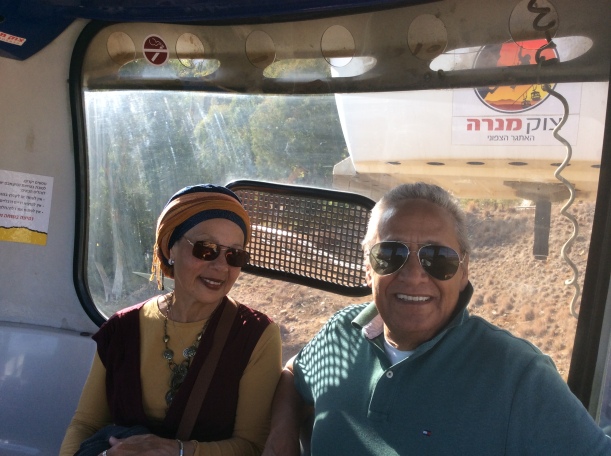
From there it was a short walk to the cable. Rivka and Ariel are aboard the cable car, above, as we await take off.
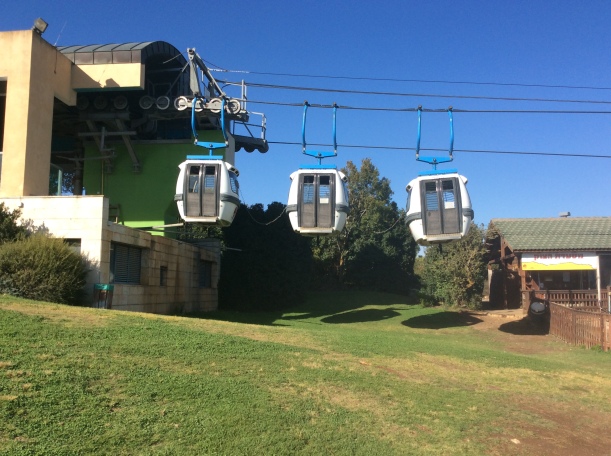
The cable cars travel in threes. At the top of the summit are hiking paths, a restaurant, a climbing wall and play cabins for children, a hotel, and a restaurant.
Also on the premises are a roller coaster ride up and down the summit, rock climbing, and two very large trampolines.
We thought we might see some migrating birds there, as Kiryat Shmona is in the Hula Valley, but we did not. We did, however, see lots of cranes in the olive groves both on the way to Kiryat Shmona and on the way back.
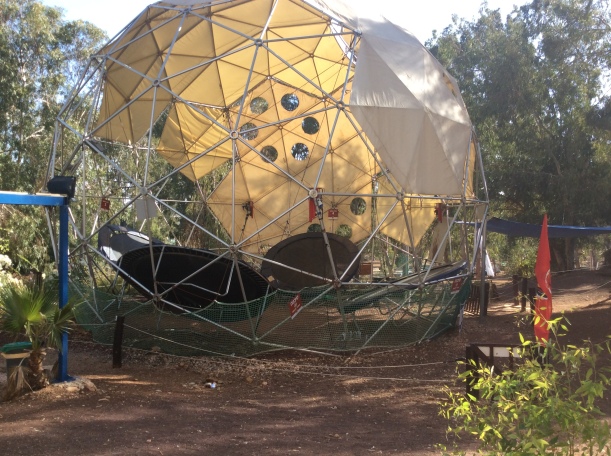
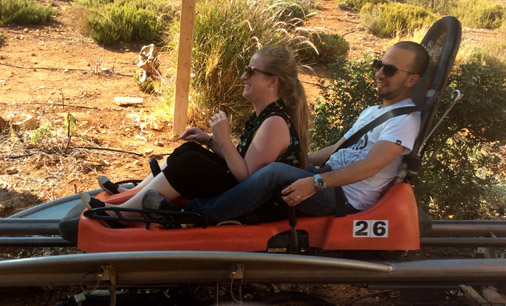 Our trip back turned out to be another adventure. We took the #500 express bus again, and again the bus zipped through the larger leg of the journey, making brief stops, but when it came to Carmiel it was lurch and throttle all the way. It took almost three hours just to reach Akko. When we reached Akko, but were still at least a mile away from the central bus station, the bus drier was stopped by a policeman.
Our trip back turned out to be another adventure. We took the #500 express bus again, and again the bus zipped through the larger leg of the journey, making brief stops, but when it came to Carmiel it was lurch and throttle all the way. It took almost three hours just to reach Akko. When we reached Akko, but were still at least a mile away from the central bus station, the bus drier was stopped by a policeman.
Immediately most of the IDF passengers got off and began walking towards the center of town. We waited while the policeman castigated the driver until finally, another bus #500 showed up, and the bus driver waved us over to get on that bus. We were worried about the first drivers future with the Egged Bus Company. We had thought he was not only a very good driver, but that he behaved in a very professional manner.
We arrived back in Naharyia tired and satisfied. Satisfied only until it is time for another adventure.








